How to Cultivate Mindfulness?

Attentive people are more likely to have a successful life. The question arises: "Why?" Because an unobservant person misses a lot. Often, he does not notice very important and necessary little things that sometimes make up our life. There is nothing surprising. Those who are sensitive to their surroundings always know and know more. This means that such a person will not be lost in a difficult situation and will be able to get out of it with dignity.



Why is this needed?
The word mindful comes from mindfulness. The last form of the word as a whole means selective perception of this or that object, to any information. Becoming attentive is to slow down your activity and start taking in information slowly. This term is opposed to the words haste or multitasking. If a person carefully studies any problem, he becomes slow, since his consciousness is focused only on this problem.
To become a focused person who can express focus at work or be able to express himself in learning activities, you need to develop your mindfulness.
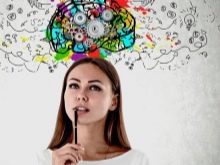


In addition, this factor will help:
- do not be distracted by trifles;
- pay attention to the best option if you need to make any choice;
- study as much information as possible;
- use the necessary information when it needs to be reproduced in memory;
- stay calm if a stressful situation comes;
- stop getting upset about something unnecessary and unnecessary;
- to hear or see what others will not hear or see;
- become patient;
- learn to pay attention to the people around;
- learn to communicate in the right way with people;
- feel your importance;
- become needed and happy.
Take note: An attentive person usually knows more than others. He is a thinking person, since his mental activity is constantly analyzing this or that information. Therefore, people always turn to such a person for help and receive it. And this means that this person feels his independence and significance.
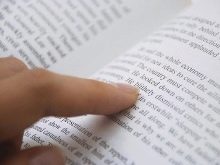


Stages of Mindfulness Dynamics
In psychology, it is generally accepted that all processes occurring in the human mind are of low and high importance. Attention also has its levels. The lowest level is involuntary attention (direct), and the highest level is voluntary concentration. The Soviet psychologist L. S. Vygotsky believed that the development of concentration is directly related to the development of behavioral activity. Attention develops according to the following scheme: from immediate to more serious, that is, there is a transitional activity from involuntary attention to voluntary.
At the same time, attention develops in different directions differently. It all depends on the chosen activity (study, professional skills, etc.). From the same statement, we can conclude: attention can develop naturally.
A person must also educate his attention consciously. To do this, he can introduce into his life such activities that will help him improve and develop his intellectual level.
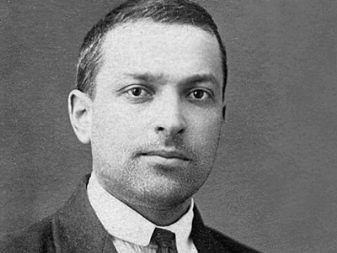

There is a direct and imposed development of attention. These two factors have both common features and separate ones. In this question, everything is explained simply. Natural attention develops as the human brain develops. There is a gradual accumulation of experience, knowledge and skills. This type of intellectual activity is a very long process, therefore it is considered the most sustainable. When attention develops in an unnatural (accelerated) way, then such a process is less stable, since its implementation requires the consolidation of the knowledge gained. Accelerated activity for the development of attention is carried out using various exercises.
For the process of the imposed development of intelligence, a person needs less time. However, all exercises and special classes must be supported by life experience. When these two factors begin to work together, then the exercise of developing attention will be a successful exercise. It should be borne in mind that the process of developing attention, including in a small child, would be impossible to carry out without speech skills, without imitating the behavior of other people and without good mental abilities.


Please note: specialists began to study the process of developing attention relatively recently. Previously, many scientists were convinced that it was not worth developing attention in children. It was only in the 20th century that the first developments on the development of attention in children and adults were obtained. A great contribution to the development of the above process was made by the famous psychologist L. Vygotsky, who, after developing a strategy for the development of a general theory of human cognitive processes, began to study the above problem.
It became clear that the process of developing voluntary attention in children begins to go well only when the child begins to engage in cognitive and educational activities. This process develops especially well when the child goes to school and starts classes in various subjects.
It is at school age that perseverance and the ability to control their activities are formed in children.


By the age of 10, the process of concentration is caused by emotionally neutral stimuli, and it acquires a better quality. And at the age of 12-14, a transitional period (restructuring of the body) begins in children, which reduces the characteristics of attentiveness.Due to the transitional period, the child becomes rapidly fatigued during the exercise of intellectual activity. All of this is due to a decrease in cortical control. By the end of adolescence, things are getting better. L. S. Vygotsky determined the time when certain stages of attention correction take place:
- The 1st stage is the control of the child's consciousness by adults;
- The second stage is the formation of the child as a subject, now he can draw the attention of adults to his needs;
- The 3rd stage implies the methods of controlling his consciousness and behavior, which the child has adopted from adults;
- Stage 4 involves controlling the child with his own attention.
When a person takes control of all the internal means that allow him to control attention, then adulthood begins.


How to increase attention?
It is known that a person is characterized by two main types of attention - this is involuntary and voluntary attention. If the makings of the first type of attention are given from birth, then we need to intensively develop the second. Let's consider this issue in detail.
Arbitrary
Its increase is directly related to the realization that a person must learn and work. To do this, he needs to include a certain type of his mental activity. For example, when younger students become members of a team, they always try to achieve success and thereby stand out in front of their comrades. Such actions are aimed at the rapid development of mindfulness. It should be borne in mind that voluntary attention is conscious. Moreover, all educational methods are aimed only at its development and the development of intelligence.
It is very important that the child is aware of this process and understands that learning is the work necessary for the development of any personality. Therefore, he needs to give the child the opportunity to understand the final goal of his education, so that he can personally imagine the future results of his own work.


So, when learning, a child should have a certain interest, and so that he does not disappear, he needs to know about the benefits of the final result. For example, a student must understand that his successful studies at school will contribute to admission to a prestigious university, after which he can get a high-paying job.
Remember, in order to develop voluntary attention, adults (teachers and parents) need to act systematically and consistently. Education based only on attracting involuntary attention will not give the desired positive effect. Also, the process of education, which is designed only to attract voluntary attention, will not give the desired effect. In this case, the child will simply get tired of learning.
That is why educational and educational processes should be based on the development of both types of attention.


Involuntary
The upbringing of involuntary attention is based on the ability to focus on various information, compare facts, etc. From early childhood, parents should familiarize their child with the world around them, namely, learn to respond to the variability of objects and phenomena that occur around them. Then the learning process will become attractive. The child will show emotions, and involuntary attention will begin to develop rapidly.
Therefore, training programs should be bright and clear. For example, to show the beauty of nature, the teacher must use paintings that were created by recognized artists. Various interesting experiences and practical work can be used to demonstrate natural phenomena.



And remember that it is at a young age that visual teaching has a special and important meaning. However, it is this type of training that requires compliance with a number of conditions. For example, you must first set a specific problem and solve it, and only then make some comparisons and find other ways to solve the same problem. Gradually, children will learn to notice the information that requires attention. In the same way, they will be able to identify the essential and main elements that are contained in the problem.
For example, the material offered for study should be very bright in its form and rich in content. Thus, he will be able to arouse interest and awaken mental activity. Only then will the students think about solving the problem. The general cultural level plays an important role in the development of intelligence, since it is this level that contributes to the development of involuntary attention.
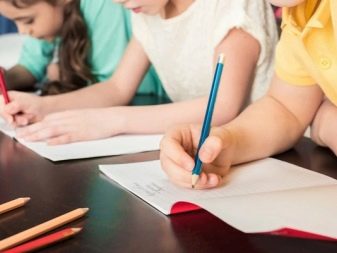
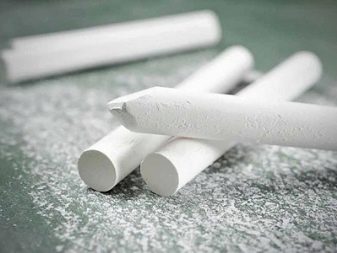
Effective exercises and techniques
To increase intelligence, you need to properly raise your awareness. This takes practice. Mindfulness goes hand in hand with mindfulness. When these two factors are adjusted properly, mental performance will improve. If you can train mindfulness, you can easily focus your mindfulness on something important and necessary to you. Plus, you can increase your memory and develop habits that will allow you to act despite the difficult situation. Remember that practices that increase mindfulness can help you develop mindfulness.
There are various techniques that work well in both directions. Rebus allows you to focus your interest and thus develop all types of mental activity. So that the children do not get tired and their interest in learning does not disappear, it is necessary to arrange a physical education minute during the lesson. A little exercise will give an effect that is comparable to intellectual exercise. Exercise "Fly" requires a board with a lined field (3x3) on the principle of nine cells. You also need to purchase a piece of plasticine (it will act as a fly). The teacher gives commands: right or left, down or up. All students carefully monitor the movement of the object and try to prevent it from leaving the playing field. If the fly goes out of bounds, it returns to the center of the board and play begins again.
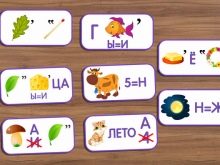

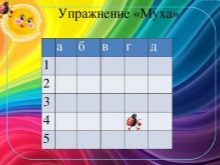
Consider some other effective techniques. The method of focusing on your breathing will not only help you to relax, but also to correct the level of concentration on something. To perform this method, you need to sit in a chair and monitor your breathing. Once you get used to performing this action, your mind will involuntarily begin to be distracted by extraneous actions. For example, you suddenly think about lunch or unwashed dishes. If there is a distraction from the main thought, you will need to return to the starting position and continue to monitor your breathing.
The following exercise will help increase the potential for group mindfulness. To complete it, all participants stand in a circle. The beholder remains in the middle. The presenter gives the command: "Early morning!", After which the players begin to involuntarily move their arms and legs. Suddenly the presenter says: "Everyone freeze!" (it is desirable that the voice be quiet). The player who did not hear and did not follow the command is "caught" by the beholder. The loser becomes the beholder, and the former beholder becomes in a common circle. The game helps to develop attentiveness and observation.



How often should you train?
Every conscious person should raise the level of his attention. Children should be helped in this process by adults. Let this activity become one of the most important directions in development for you. Therefore, train your attention anytime, anywhere. For example, you are walking with your child on the way to the store or to the park. Ask your child to pay attention to the surrounding objects: trees, curbs, fences, buildings. Let your child learn to memorize every little thing: color, composition, quantity, quality of the material. For example, you saw a green concrete fence or you walked past a store, the walls of which were completely transparent.
Ask the child guiding questions: "Was the fence transparent?" or "What did you see behind the transparent walls of the store?" etc. Such questions will give impetus, and mental activity will work in full force. Remember, special exercises are very good at increasing mindfulness, but when it is developed directly, the effect is only amplified. Keep in mind that during sleep, the human brain always fixes the information that it received earlier.
Therefore, mindfulness training should be done even before bed. Play this game with your child. Let him close his eyes, and during this time you hide some thing. After the child opens his eyes, he will have to identify the missing thing.


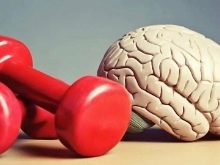
In the next video, you will find an interesting exercise for developing attention when working with information.








